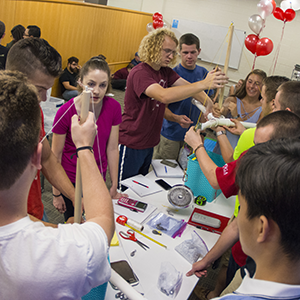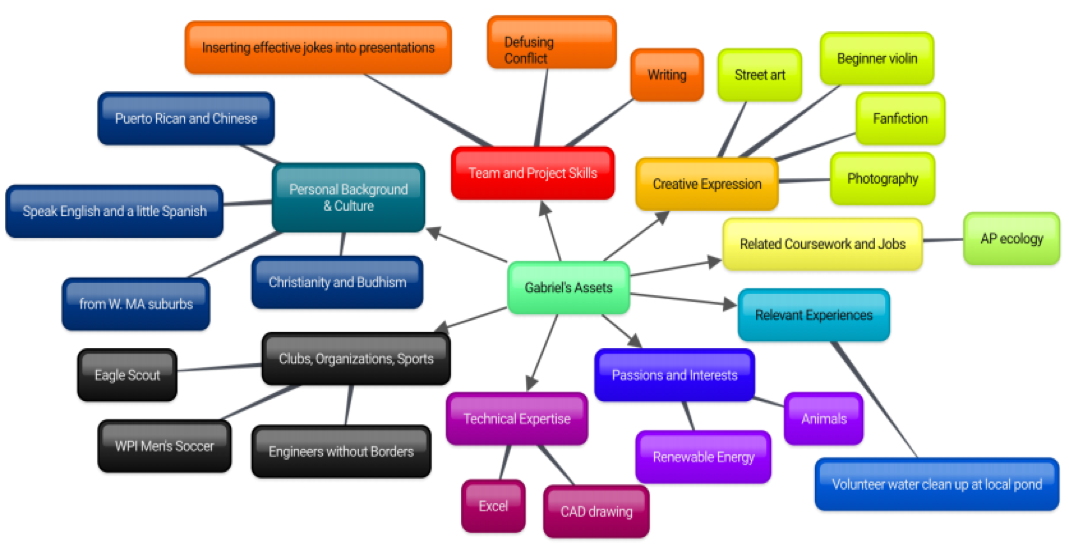(Note: The work described in this post, and the resources linked at the end, are also applicable to K-12 PBL.)

The Worcester Polytechnic Institute Center for Project-Based Learning regularly runs workshops to help college and university faculty integrate project-based learning into their courses and curricula. Over time, we’ve found one topic that nearly all faculty struggle with and want to improve: how to bring students together into effective teams and support their collaboration.
Teamwork is cited by employers as an essential skill for success in the workplace, and collaborative project work is well-established as a high-impact practice shown to enhance student learning. In our experience, though, many students and faculty shy away from team-based assignments based on prior experiences. When asked what the number one problem in teamwork is, many cite accountability, worrying about underperforming “slackers.”
The stakes are high. While teamwork benefits all students, it has been shown to especially benefit first-generation and low-income students, many of whom are from underrepresented groups. Furthermore, diverse teams, when they function well, are better at innovative problem-solving than teams that lack diversity. However, students from underrepresented groups report feeling marginalized in teams at much higher rates than other students, and diverse teams often struggle to come to mutually beneficial ways of working together. Students who feel marginalized, in turn, may appear to others to be underperforming.
The Asset Mapping Process
Two of my WPI colleagues, Geoff Pfeifer and Lisa Stoddard, have been exploring ways of promoting equity and inclusion in the student project teams they guide through our university’s first-year Great Problems Seminar. Their work, which is being supported by the Davis Educational Foundation, is intended to reduce the effects of stereotyping and bias in diverse teams. A particular phenomenon they address is task assignment bias; an example is when women are assigned secretarial and organizational duties, while men take on more technical or research-based work. Often, students are unaware when their team dynamics are affected by biases and stereotyping.
The approach Geoff and Lisa have developed begins with students going through a process called asset mapping, based on community development work that emphasizes communities’ assets rather than their deficits. In the asset mapping process, students are prompted identify and share with their teammates relevant life, work, and academic experiences that they might be able to bring to the tasks at hand. In this process they also identify and discuss areas for growth – what they hope to learn from the group’s work. This process creates an inventory of the team’s assets and interests, and it also creates a space for students to learn about each other’s experiences, interests, and talents in ways that go beyond their initial impressions of each other.

Students are then prompted to complete a team asset chart that lists the different tasks the team must accomplish. Based on team members’ assets and interests, the students are asked to make decisions about who will do what, justifying their decisions with evidence from individuals’ asset maps and areas for growth. These decisions, along with other agreements regarding how the team will work, communicate, compromise, and resolve disputes find their way into a Team Charter – a type of contract that the team develops to guide not only the work, but also the process through which it will get done.
Geoff and Lisa also employ strategies for mid-project team processing and for prompting students to reflect on their teamwork process in formative ways throughout the project; these assignments can help student teams diagnose their challenges and advance their ability to work productively together.
Two Resources
I encourage you to look through this paper that Geoff and Lisa recently published. In it, they share students’ reflections on their teamwork experiences and the benefits of asset mapping and task charting. A suite of tools they have developed to support asset mapping and task charting is available in this handbook.

